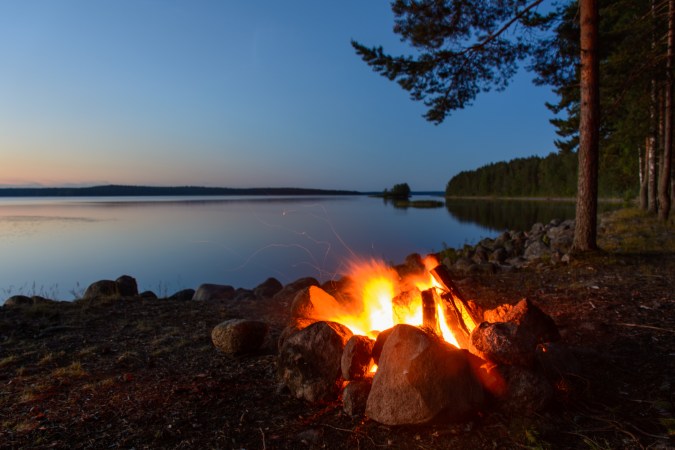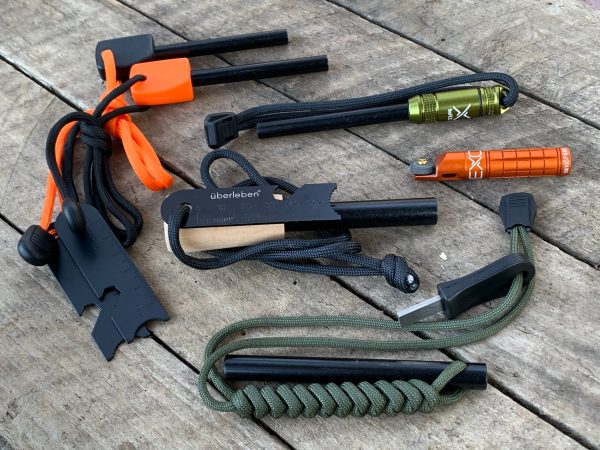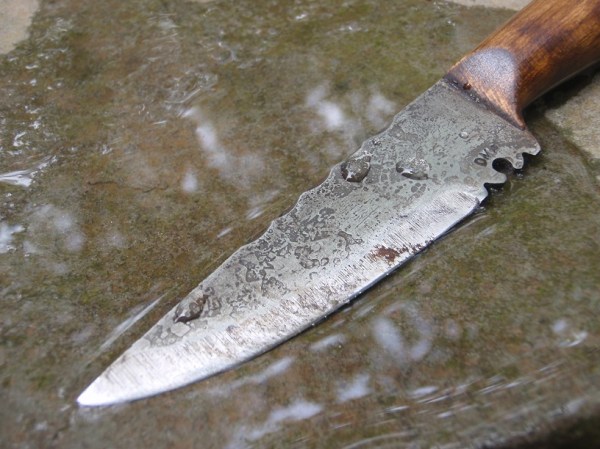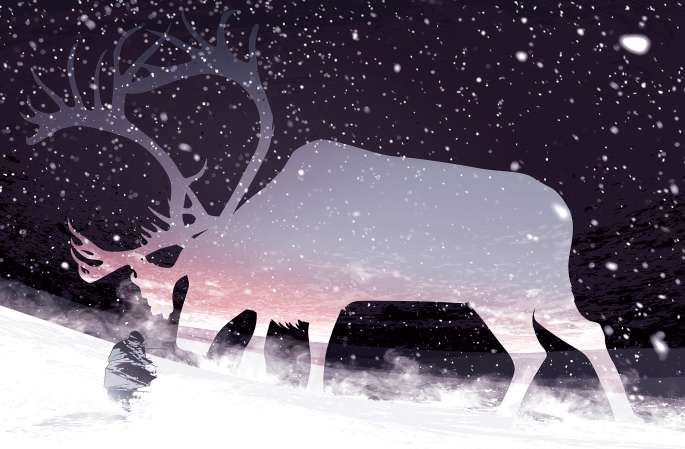Flint and steel is an early fire-making technique that dates back to the first days of metal experimentation in Europe and Asia. This fire-starting method creates a red-hot spark when a piece of high-carbon steel is struck against a hard, sharp stone edge (like a flake of flint). The steel shaving is ignited by the friction created by striking steel and stone together. This steel spark is immediately caught in fire-charred material, then placed in dry tinder and blown into flame. Easy, right? Well, there is a bit of a learning curve—or as I refer to it, the time when you scrape off more knuckle than steel. Just remember that practice makes perfect.
THE EQUIPMENT
Steel Striker
High-carbon steel strikers are often worked by a blacksmith to achieve the right hardness and also to make the steel into a comfortable shape. Efficiently shaped strikers have been hammered into “C,” “D,” and horseshoe shapes over the centuries. Strikers are often made from old files, machetes, and other tools, though some of these tools and some knives have the right hardness and carbon content to strike sparks without being modified.
Flint
The flint can be almost any type of stone that is harder than the steel striker. The piece should fit comfortably in your hand and pose no danger of cutting you. The striking edge of the flint should be 90 degrees or less, though an edge less than 45 degrees will work best. Some of the most common stones in use are flint, chert, jasper, granite, chalcedony, and quartz. Have a look at our stone tool butchering post (link to stone tool butchering post) if you’re wondering how to break the stone into flakes.
Char Cloth
The char cloth is some form of blackened, plant-based material for catching and feeding a spark. Cotton and linen are traditional American frontier char cloth materials; however most flammable plant fibers, tinder, some shelf fungi, and punky, rotten wood can be turned into “char cloth.”
To make char cloth, you’ll need a metal container that is nearly air tight, with just a few small holes poked in it by a punch or nail. Fill the can with the material to be charred, and place it in the center of a campfire for 5 minutes. Smoke and maybe some flames should begin to jet from the few small holes in the container. After a few minutes, usually three to five, the smoke should almost stop jetting out.
At the 5 minute mark, use a stick to carefully roll the hot container out of the fire and let it become cool to the touch. The char cloth should be black and fragile, but not burned up to ash. It should catch sparks well. If not, it might have been a poor material to use or it might need further charring. If it is not yet blackened and fragile, it will need further charring.
Can you just grab some chunks of charcoal to use as char? Nope, sorry. Charcoal was created in an oxygen-rich environment, and it does not behave the same as true char cloth. Remember that the char cloth or other char materials must be created in a low-oxygen environment in order to work properly—or at all for that matter.
FLINT AND STEEL TECHNIQUES
Strike the stone downward across your steel, holding the stone at a 45-degree angle to scrape off steel sparks. These sparks come from the carbon in the steel; and the sparks can be scraped off by any sharp stone that is harder than the steel.
Strike the sparks onto char cloth that is already sitting on a bundle of tinder.
If you used cotton cloth for your char, you can also wrap the char cloth around the edge of the flint, strike through the brittle cloth, and then place the burning char cloth into the tinder.
TROUBLESHOOTING
If you are having trouble striking sparks:
—Change the angle of the flint
—Use a sharper edge on the flint
—Strike harder or possibly softer with the striker
—Change your striking motion
If the sparks will not catch on the char cloth:
—Strike the sparks closer to the char cloth
—Change the angle at which you are striking sparks
—Swap the char cloth with a different material













